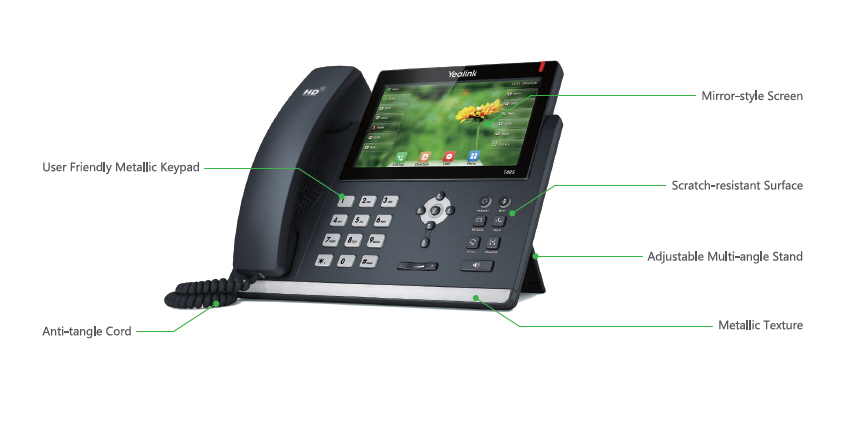Introduction
In an era where communication is the lifeblood of businesses, Voice over Internet Protocol (VoIP) phone systems have emerged as a cornerstone of effective connectivity. They offer unparalleled flexibility, cost-efficiency, and advanced features that traditional phone systems simply cannot compete with. However, as the adoption of VoIP technology surges, so does the threat landscape surrounding it. One particularly menacing threat is the Distributed Denial of Service (DDoS) attack, which can cripple VoIP phone systems and render them useless.
This article will delve deep into how DDoS attacks target VoIP phone systems and explore effective strategies for defending against these malicious assaults. By understanding the mechanics behind these attacks and implementing robust defenses, organizations can safeguard their essential communication tools and maintain operational continuity.

Understanding DDoS Attacks
What Is a DDoS Attack?
A Distributed Denial of Service (DDoS) attack is a malicious attempt to disrupt the normal functioning of a targeted server, service, or network by overwhelming it with traffic from multiple sources. This influx of traffic causes legitimate requests to be denied, leading to service outages.
Types of DDoS Attacks
Volume-Based Attacks: These involve overwhelming the target with massive amounts of traffic. Protocol Attacks: These exploit weaknesses in network protocols. Application Layer Attacks: These focus on crashing web applications by sending requests that appear legitimate but are designed to overload the system.Why Are VoIP Phone Systems Targets?
VoIP phone systems are increasingly targeted because they rely heavily on internet connections and are often less secure than traditional telephony systems. Moreover, disrupting communications can lead to significant financial losses for businesses.
VoIP Phone Systems: A Quick Overview
What Is a VoIP Phone System?
A VoIP phone system allows users to make voice calls using an internet connection instead of traditional telephone lines. This technology converts voice into digital packets that are transmitted over IP networks.
Key Features of VoIP Phone Systems
- Cost-Efficiency: Lower operational costs compared to traditional telephony. Flexibility: Users can make calls from anywhere with an internet connection. Scalability: Easily add or remove lines without significant infrastructure changes.
Popular VoIP Providers
| Provider | Features | Price Range | |------------------|-----------------------|-------------| | RingCentral | Video conferencing | $19-$49 | | Vonage | Mobile app | $19-$39 | | 8x8 | Team messaging | $12-$50 |
How DDoS Attacks Target VoIP Phone Systems
The Mechanism Behind DDoS Attacks on VoIP
DDoS attacks on VoIP typically target the Session Initiation Protocol (SIP), which is used for initiating and managing voice calls over IP networks. Attackers exploit vulnerabilities in SIP implementations or overwhelm resources by flooding them with illegitimate requests.
Common Tactics Used in DDoS Attacks
SYN Floods: Exploit TCP connections by sending numerous SYN requests without completing the handshake process. UDP Floods: Send large volumes of User Datagram Protocol packets to random ports on a target server. DNS Amplification: Use misconfigured DNS servers to amplify traffic directed at a target.Impact of DDoS Attacks on Businesses Using VoIP Phone Systems
Financial Consequences
The financial repercussions of a successful DDoS attack can be staggering:
- Loss of revenue due to downtime Increased operational costs for recovery efforts Potential legal ramifications if customer data is compromised
Reputation Damage
Beyond immediate financial losses, businesses may suffer long-term damage to their reputations. Clients may lose trust in a company unable to secure its communication systems effectively.
Defensive Strategies Against DDoS Attacks on VoIP Phone Systems
Implementing Robust Network Security Measures
Firewalls and Intrusion Detection Systems (IDS):- Deploy firewalls that filter out malicious traffic based on patterns known for DDoS attacks. Use IDS tools that monitor incoming traffic for suspicious activities.
- Set thresholds for incoming traffic to minimize the risk posed by sudden spikes in activity.
- Distribute network load across multiple servers to prevent any single point from being overwhelmed.
Advanced Techniques for Protecting VoIP Phone Systems From DDoS Attacks
Utilizing Cloud-Based Protection Services
Cloud-based solutions offer scalable protections against DDoS attacks by redirecting traffic through scrubbing centers before it reaches your network infrastructure:
Content Delivery Networks (CDN):- CDNs cache content closer to users, reducing latency while absorbing some attack traffic.
- Specialized services like Cloudflare or Akamai provide tailored protections against various types of attacks.
Regular Updates & Patching
Keeping your software up-to-date is crucial in defending against known vulnerabilities exploited by attackers. Regularly patching your VoIP phone system helps reduce risks significantly.

Educating Employees About Phishing Threats Related to DDoS Attacks
Employee vigilance plays a vital role in cybersecurity:
Conduct regular training sessions focusing on identifying phishing attempts that could lead to compromised credentials. Encourage employees not to click on suspicious links or download unsolicited attachments related to their VoIP accounts.Monitoring and Analyzing Traffic Patterns for Anomalies
Establish baseline performance metrics for your network's normal operations:
Use monitoring tools that alert you when unusual patterns occur—such as spikes in incoming connections typical during an ongoing attack. Implement logging practices that help trace back suspicious activities leading up to an incident.FAQs about How DDoS Attacks Target VoIP Phone Systems and How To Defend Against Them
What are common signs my VoIP system might be under attack?
Signs may include sudden call drops, inability to connect calls, or unexpected delays during conversations—watch out for these indicators!
Can I use my existing firewall against DDoS attacks?
While firewalls are helpful for basic filtering tasks, dedicated solutions specifically designed for mitigating sophisticated attacks should be employed alongside them.
How do I report a suspected DDoS attack?
Contact your internet service provider immediately; they usually have procedures in place for handling such incidents effectively!
Are there specific technologies recommended for protecting my VoIP system?
Yes! Technologies like SIP trunking security gateways often provide robust protection mechanisms tailored explicitly toward safeguarding against SIP-based threats common among many current attacks today!
Should I consider investing in third-party security services?
Absolutely! Engaging reputable third-party vendors experienced in cybersecurity best practices can dramatically enhance your overall defense VoIP Phone System Las Angeles strategy!
Can user education really make a difference?
Yes! Informed users are far less likely than uninformed ones—resulting from training sessions—to fall prey victims' tactics devised targeting unsuspecting individuals within organizations!
Conclusion
As we navigate this digital landscape dominated by interconnected devices and online communication platforms like VOiP phone systems—understanding how threats such as distributed denial-of-service (Ddos) attacks manifest themselves becomes paramount! By implementing robust security measures alongside fostering employee awareness about potential pitfalls—we pave our way toward establishing resilience against these disruptive forces aimed at undermining smooth operations within organizations utilizing cutting-edge telecommunication technologies today!
In summary, knowing how Ddo Sattac ks target VoiP phon e s ystem s provides not just insight but also equips decision-makers with actionable strategies necessary t o defend their communications infrastructure successfully!
